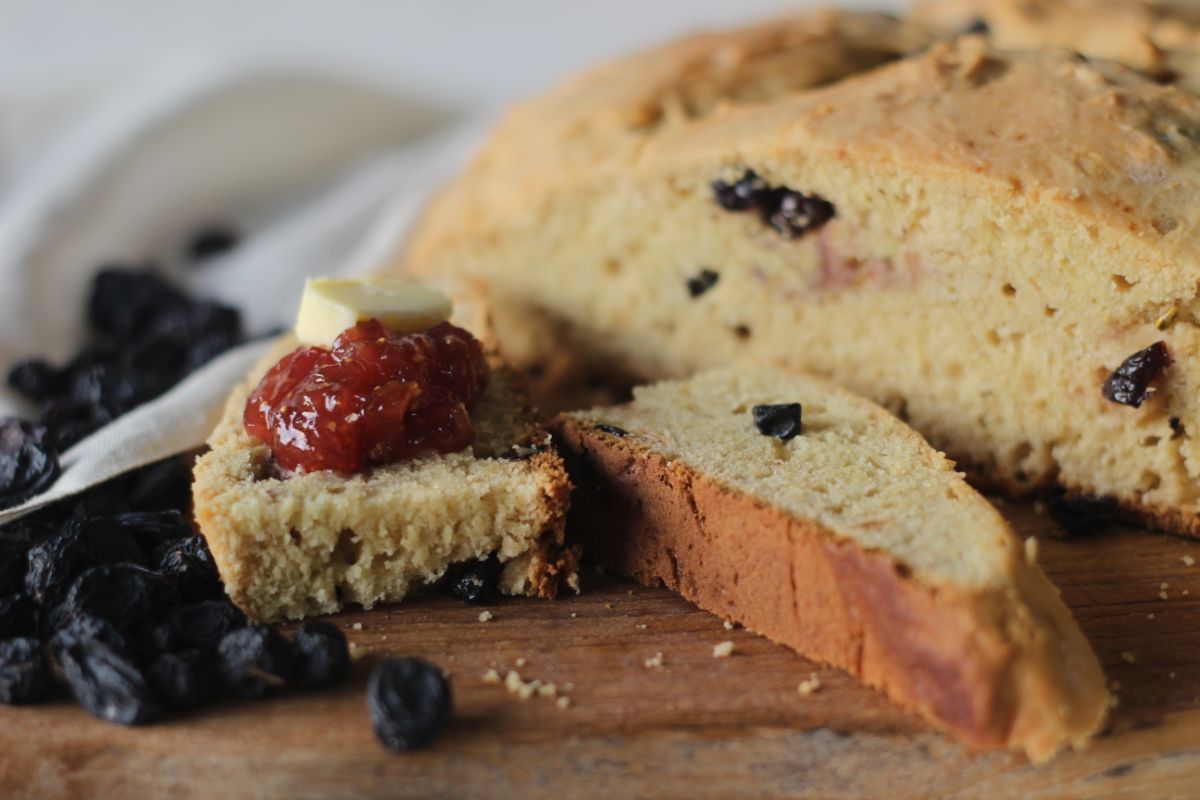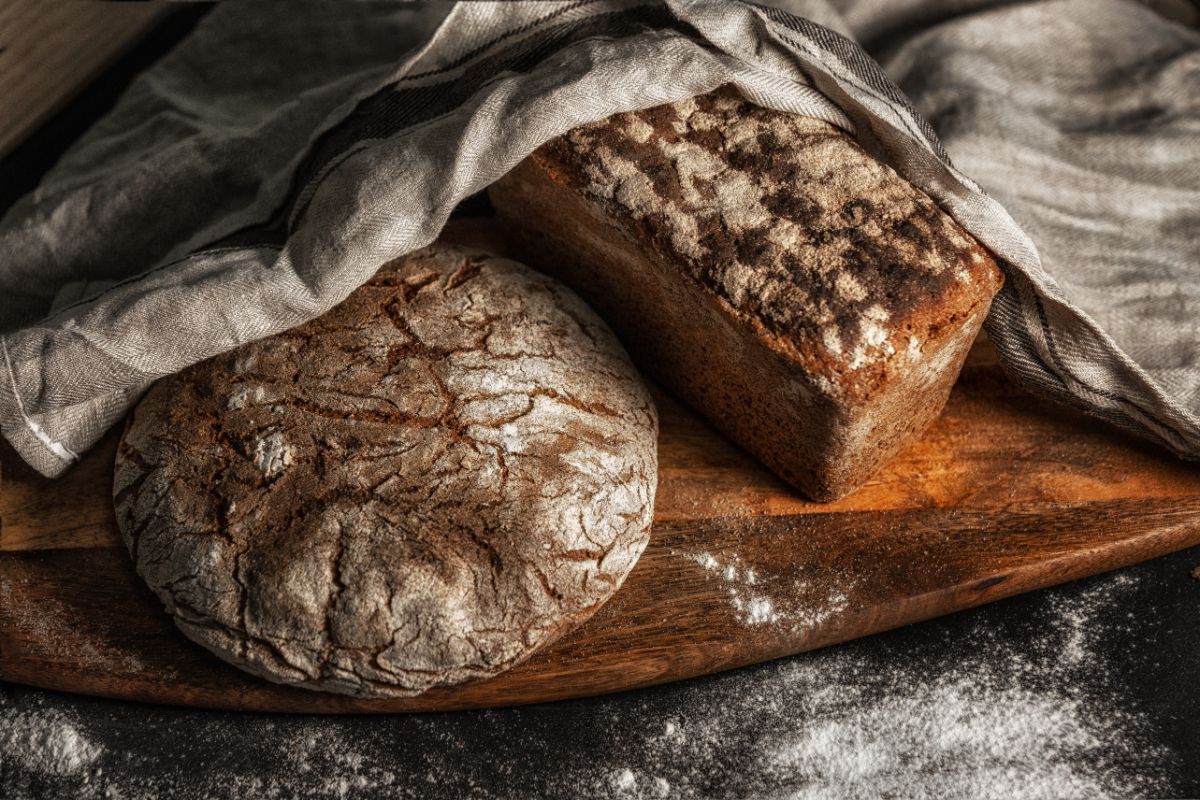Can undercooked bread make you sick? This is a reasonable question given that most of us know raw dough of all forms can make us ill. Let’s look at some of the cases where undercooked bread will make you ill and the occasions when you may be able to fix it or eat it safely.
Is undercooked quick bread able to make you sick?

If your quick bread recipe involves adding milk or water before tossing it in the oven, the answer is no, it can’t make you sick. This is similar to eating raw muffin mix when the recipe only calls for adding water, oil, and/or milk.
When there is no raw yeast or eggs in it, you probably can’t get sick from the mix or semi-cooked product.
*This article may contain affiliate links. As an Amazon Associate, I earn from qualifying purchases. Please take that into account.
- Dutch oven
- Large mixing bowl
- Measuring cups and spoons
- Bread thermometer (fancy or a budget one)
- Scoring lame
Extra (nice to have):
- Kitchen scale
- Dough scraper and bowl scraper (yes, they are different)
- Cooling rack
- Baking stone (you don’t need a dutch oven if you use this)
👉Learn how to make bread and pizza with this awesome book.
Can you eat undercooked quick bread recipes that use yeast?
Sometimes the baking mix calls for you to add ingredients like yeast and water but not eggs. In these cases, you could eat some of the raw dough in moderation. Just realize that the raw yeast could cause stomach discomfort from the gas generation.
If you’ve eaten a lot of sugary foods on top of that, then it could make you ill. It just won’t be salmonella.
Can you get sick from undercooked bread from traditional recipes?
This is the point where you’re nearly guaranteed to get sick. When mixing raw flour that occasionally contains Ecoli bacteria, raw eggs that often contain salmonella, and raw yeast, you’re now very likely to become ill if you eat raw dough.
These same risks remain until the bread is thoroughly cooked at a high enough temperature to kill all of these threats.
Ironically, this does mean that raw flour in and of itself mixed with water and eaten can make you sick, too. The processors know it is meant to be cooked, so they don’t always process it in the most sanitary way.
In this regard, adding water to flour to make undercooked flapjacks poses a health hazard, too.
Note that if you make raw dough with eggs and flour, it is a perfect breeding ground for bacteria when exposed to warm air. Put the raw dough you’ve mixed up in the fridge as soon as you make it if it isn’t about to go in the oven.
Keep the raw dough chilled until you’re ready to make it. And it will eventually go bad in the fridge, so if you want it to sit for a long time, freeze it or partially bake it. More on that later.
Can you make undercooked bread safe to eat?

Yes, though you may not like the outcome. The solution is to heat the oven back up to 350 degrees and bake the bread for at least ten minutes. This ensures that the middle of the loaf gets hot enough to kill the bacteria inside.
Depending on the size of the loaf and your oven settings, it may need to be in there for twenty minutes.
This could burn the top, bottom or all of the outside of the loaf.
However, that’s the price you may pay for ensuring your bread won’t make you sick. Note that this won’t save bread that wasn’t set before you turned off the oven, either.
Why do so many people eat undercooked bread?
Most people are not eating undercooked bread. However, many will eat bread after it wasn’t properly cooled. You should let the bread cool for at least two hours before you slice it, though rolls cool faster.
It will look soggy and soft before that point, though it is safe to eat. Start cutting into it, and you’ll deform the loaf. Then it looks like it was undercooked.
Others will look at the bread sweating as it cools. The moisture steamed out of the center of the bread beads on the outside until the stiffer crust forms. It may look undercooked as it is starting to cool because the exterior of the loaf appears damp.
Is par-baked bread safe to eat?
Par-baked bread or partially baked bread is baked about 90 percent of the way and then taken out. It should be cooled completely, tightly wrapped to seal in the moisture, and then frozen. You can thaw the bread out overnight in the refrigerator.
Finish baking it for the remaining 10 percent of the cooking time plus a few more minutes so that it is completely cooked. Then serve the fresh, hot bread to company.
In this case, the bread was already cooked so long that it is probably safe to eat once it has thawed. However, you’ll want to finish cooking it for the best tasting results.
How can you avoid eating undercooked bread?
The simplest solution is to use a thermometer to check the internal temperature of the bread. Soft bread should reach 180 degrees for several minutes. Crustier bread should hit 200 degrees.
You can stick the thermometer into the side of the loaf to reach the middle without an obvious hole in it. Just leave the thermometer in the loaf until it registers the necessary temperature.
What if you don’t have a thermometer? Most people will spit out the undercooked bread because of the literally doughy nature. It won’t taste good compared to the light, airy bread they were expecting.
Is frozen dough or frozen bread safe to eat?
Freezing bread doesn’t make it more or less safe. It simply maintains it in the same state it was in. For example, frozen dough carries the same health hazards as fresh dough.
Bread that is already fully cooked is safe to eat assuming it hasn’t sat out so long it is moldy. Then the bacteria and mold are preserved when it is frozen. If the bread was already stale when frozen, it will be stale when you take it out.
The best way to preserve bread is to fully cook it or buy a pre-made loaf, then freeze it. It will then stay good in the freezer for weeks. Just thaw out in the fridge overnight before setting it in the bread box to protect from pests.
